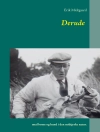Not so long ago, all a student studying human evolution needed was a familiarity with the relatively sparse fossil record and what limited information there was about the context of the sites, a basic knowledge of gross anatomy and archeology, and an understanding of simple analytical methods.
Times have changed. The fossil record has grown exponentially, imaging techniques have advanced dramatically, quantitative methods have burgeoned, and molecular biology has revolutionized our understanding of genetics, evolutionary history, and development. Added to this are advances in the archeological, biological, and earth sciences that help interpret the context of the fossil evidence and reconstruct behavior. But presently there is nowhere students of human evolution cna easily find out about topics as disparate as ameloblast, Coopers Cave, daily secretion rate, the effect hypothesis, homeobox genes, insolation, phylogenetically independent contrasts, quantitative trait locus, semicircular canals, and tephrostratigraphy.
The Wiley Blackwell Student Dictionary of Human Evolution contains upwards of 2500 entries, all drafted with an eye on the student user. It is an indispensable source for those studying human evolution.
Table of Content
Preface and Acknowledgments vi
Wiley-Blackwell Encyclopedia of Human Evolution viii
Hominin Fossil Abbreviations ix
A 1
B 27
C 47
D 86
E 103
F 124
G 144
H 166
I 200
J 209
K 212
L 227
M 249
N 288
O 300
P 318
Q 364
R 366
S.380
T 419
U 442
V 447
W 453
X 458
Y 459
Z 460
About the author
Bernard Wood is the Henry R. Luce Professor of Human Origins in the Department of Anthropology at George Washington University, and Adjunct Senior Scientist at the National Museum of Natural History, the Smithsonian Institution. He is a medically-qualified paleoanthropologist who moved into full-time academic life in 1972. He holds the degrees of B.Sc., M.D., Ph.D., and D.Sc. from The University of London. In 1982 he was appointed to the S.A. Courtauld Chair of Anatomy in The University of London, and in 1985 he moved to the Derby Chair of Anatomy and to the Chairmanship of the Department of Human Anatomy and Cell Biology at the University of Liverpool. He was appointed the Dean of The University of Liverpool Medical School in 1995 and served as Dean until his move to Washington in the fall of 1997.When he was still a medical student he joined Richard Leakey’s first expedition to what was then Lake Rudolf in 1968 and he has remained associated with that research group, and pursued research in paleoanthropology, ever since. His research centers on increasing our understanding of human evolutionary history by developing and improving the ways we analyze the hominid fossil record. He is the author of numerous publications and Director of the Center for the Advanced Study of Hominid Paleobiology at GWU.












